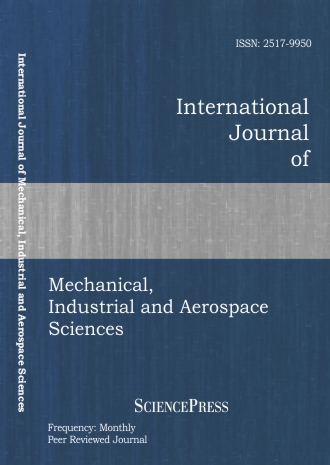
Scholarly
Volume:2, Issue: 4, 2008 Page No: 533 - 536
International Journal of Mechanical, Industrial and Aerospace Sciences
ISSN: 2517-9950
2413 Downloads
On Discretization of Second-order Derivatives in Smoothed Particle Hydrodynamics
Discretization of spatial derivatives is an important issue in meshfree methods especially when the derivative terms contain non-linear coefficients. In this paper, various methods used for discretization of second-order spatial derivatives are investigated in the context of Smoothed Particle Hydrodynamics. Three popular forms (i.e. "double summation", "second-order kernel derivation", and "difference scheme") are studied using one-dimensional unsteady heat conduction equation. To assess these schemes, transient response to a step function initial condition is considered. Due to parabolic nature of the heat equation, one can expect smooth and monotone solutions. It is shown, however in this paper, that regardless of the type of kernel function used and the size of smoothing radius, the double summation discretization form leads to non-physical oscillations which persist in the solution. Also, results show that when a second-order kernel derivative is used, a high-order kernel function shall be employed in such a way that the distance of inflection point from origin in the kernel function be less than the nearest particle distance. Otherwise, solutions may exhibit oscillations near discontinuities unlike the "difference scheme" which unconditionally produces monotone results.
Authors:
References:
[1] L. Lucy, "A numerical approach to the testing of fission hypothesis,"